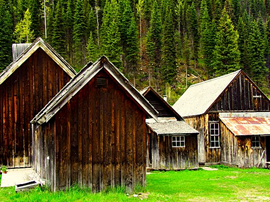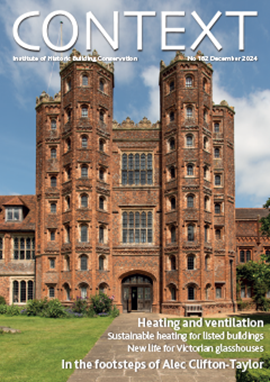Construction History Vol 38, No 2, 2023
Construction History (Vol 38, No 2, 2023) has two particularly instructive papers on brick. The first, an illustrated 14-page paper by Linnéa Rollenhagen Tilly, discusses coated brick as an ersatz for limestone. Tilly compares architectural works in Toulouse and Stockholm as the culmination of over 20 years of Franco-Swedish research in the field of construction history, where parallels between the two cities in the use of coated brick had attracted the author’s attention. Given the infrequently encountered nature of this material, this paper may be of interest to construction historians, researchers and practitioners.
The second paper is a 25-page review of brickwork by Catherine Rangel Cobos, Felix Lasheras Marino and Javier Pinilla-Mellow. It considers running bond and face bond in the construction of solid-faced brickwork walls, using a historical evaluation of English and American technical texts published up to the 1930s. The authors discuss the acceptance of the word ‘bond’ (as the coordinated and concerted arrangement of bricks in each course), such that the overlapping and interlocking arrangement would work as a strong, single structural unit. This is assisted by some very helpful detailed drawings of how the bonds work.
The paper discusses face bond and running bond, the latter addressing bonding courses with square-faced bricks, bonding courses with cut-face bricks, bonding courses paired with face-brick headers and bonding courses with metal ties. From the heritage construction perspective, the article aims to assist in recognising an unfamiliar masonry solution and provides ways to allow for correct identification on site.
This article originally in the Institute of Historic Building Conservation’s (IHBC’s) Context 179, published in March 2024. It was written by Bob Kindred MBE.
For those interested in brickwork, Construction History, the international journal of the Construction History Society (Vol 38, No 2, 2023), has two relevant papers. Coated brick is relatively uncommon in the UK, but its use as an ersatz for limestone is a phenomenon found in France and Sweden. Linnéa Rollanhagen Tilly explores the influence of French methods of construction. She has attempted to identify the differences and points of conversion between two urban construction programmes of the 18th century in two geographically distinct cities: Toulouse and Stockholm, both thought to have been based on the common model adopted in Paris.
Tilly’s analysis draws on three distinct research projects, involving the study of a wide range of archive documents and historic publications, notably published by the Swedish Academy of Science, and specifications within contracts for public buildings and urban programmes. She has concluded that informal networks were created by contemporary construction professionals on tours across Europe, then considered an essential part of the education of the gentry. Not only could those on tour study buildings first hand, but they would also purchase books and models relating to construction. The author’s research demonstrates numerous similarities in these two very different cities, especially in the use of bricks with stone-like coatings as a substitute for stone, either as a more affordable material, or in locations that lacked an adequate source of limestone.
In the second paper of interest, Catherine Rangel Cobos, Felix Lasheras Marino and Javier Pinilla-Mello of the Department of Construction and Architectural Technology, Madrid, discuss a divergence of practice between American and English technical texts published up to the 1930s regarding the composition of brick walls. Before the 20th century, numerous solid brick facades in both Britain and the USA featured stretcher bond (without cavities), although the differentiation of the bonding types only became clearer in the 1940s with the assignment of specific terms. For example, ‘structural bond’ was called ‘the method of overlapping bricks to give the wall a greater strength’, while ‘pattern bond’ referred to ‘the arrangement of the brick in the wall to give a pleasant appearance’. In other words, the latter referred only to the method used to arrange and tie the face bricks on the front, while the former referred to the method of doing so on both the front and the cross-section of the wall.
Under these terms, in a wall made in any of the basic bonds (English, Flemish, American, and so on), these bonds worked both for structural and aesthetic purposes. Pattern bond deals with the concerted laying of bricks in the front wall, while structural bond deals with the method of tying the front to the backing construction. The traditional methods used for the external appearance of brick walls, widely applied throughout the second half of the 19th century, are now largely forgotten as a consequence of cavity wall construction (especially where the inner wall is not brickwork). The paper helpfully illustrates numerous bonding configurations in threed imensions with an insightful exposition of the term ‘bond’.
This article originally appeared in the Institute of Historic Building Conservation’s (IHBC’s) Context 180, published in June 2024.
--Institute of Historic Building Conservation
Related articles on Designing Buildings Conservation.
IHBC NewsBlog
SAVE celebrates 50 years of campaigning 1975-2025
SAVE Britain’s Heritage has announced events across the country to celebrate bringing new life to remarkable buildings.
IHBC Annual School 2025 - Shrewsbury 12-14 June
Themed Heritage in Context – Value: Plan: Change, join in-person or online.
200th Anniversary Celebration of the Modern Railway Planned
The Stockton & Darlington Railway opened on September 27, 1825.
Competence Framework Launched for Sustainability in the Built Environment
The Construction Industry Council (CIC) and the Edge have jointly published the framework.
Historic England Launches Wellbeing Strategy for Heritage
Whether through visiting, volunteering, learning or creative practice, engaging with heritage can strengthen confidence, resilience, hope and social connections.
National Trust for Canada’s Review of 2024
Great Saves & Worst Losses Highlighted
IHBC's SelfStarter Website Undergoes Refresh
New updates and resources for emerging conservation professionals.
‘Behind the Scenes’ podcast on St. Pauls Cathedral Published
Experience the inside track on one of the world’s best known places of worship and visitor attractions.
National Audit Office (NAO) says Government building maintenance backlog is at least £49 billion
The public spending watchdog will need to consider the best way to manage its assets to bring property condition to a satisfactory level.
IHBC Publishes C182 focused on Heating and Ventilation
The latest issue of Context explores sustainable heating for listed buildings and more.
















